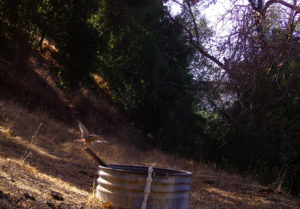
As humans, we have a tendency to be big and loud and to take up space. This is particularly evident in the Bay Area, where we constantly need more and more homes as our population and our economy boom. As we push outward, the bobcats push in, making co-habitation far more frequent than many people think.
Despite what seems to be a relatively robust population, you’re not likely to see a bobcat in the Bay Area unless you go out looking for one. Backyard sightings pop up on the news every so often, precisely because of their rarity. You can thank the hours the cats keep: they’re crepuscular, meaning they’re most active at dawn or dusk, when the light is dim and it’s hard to make out just what that moving shape is. They’re also shy, preferring to run and hide when they see people. A territorial nature also helps; each cat has its designated area of a few square miles, meaning your suburb may only be host to a few individuals.
But why aren’t the bobcats heading further into the mountains? Much like another common urban predator, the coyote, they’re highly adaptable. Other feline species have specialized diets, but a bobcat is more than happy to munch down on available rodents or even insects- whatever they can catch, which turns out to be a wide variety of things thanks to their nimble grace. They can learn to live in close proximity to us, even bringing their young to drink at birdbaths in backyards.
It’s not all sunshine and roses for bobcat and human intermingling, however. New housing cuts into formerly wild areas with little regards for how animals use the space. This lack of regard leads to habitat fragmentation, in which large, connected habitats become individual isolated fragments. Unable to cross boundaries, which are frequently busy roads or even freeways, populations stagnate. The same cats mate with each other year after year. Their offspring then mate with each other, and so on and so forth. Genetic diversity dwindles and inbreeding becomes a major problem. Some brave bobcats may attempt to cross the roads, leading to car accidents and deaths.
What’s the solution? As with most issues of human and animal proximity, it’s not easy. Ideally, new housing developments would be made after a careful survey of the area to make sure we’re not encroaching on important land. More realistically, wildlife bridges and underpasses are a good solution. They would stretch either over or under busy roadways, allowing bobcats and other animals to pass between habitats without having to risk their lives.
The question of coexistence is one that’s only going to become more important as the years pass. As we continue to work out what it means to live with wildlife, keep your eyes open in that twilight and pre-dawn time, and hopefully you’ll see one of our elusive wild neighbors.




